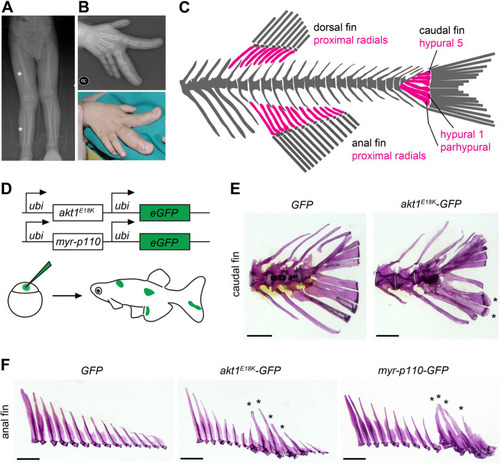Fig. 1.
- ID
- ZDB-FIG-230219-15
- Publication
- Blum et al., 2023 - Localized heterochrony integrates overgrowth potential of oncogenic clones
- Other Figures
- All Figure Page
- Back to All Figure Page
|
Mosaic overactivation of the PI3K/AKT pathway causes fin long bone overgrowth in zebrafish. (A) Leg length discrepancy due to overgrowth of the right tibia and fibula (marked by asterisks) in a patient with Proteus syndrome. (B) Macrodactyly in a patient diagnosed with PROS. Images in A and B were modified from Zeng et al. (2020) and Tian et al. (2020), respectively, under the terms of the original CC-BY 4.0 license. (C) Generalized diagram of the adult zebrafish axial skeleton. Long bones of the median fin endoskeleton are highlighted in magenta. (D) Schematic of the experimental design to generate mosaic zebrafish harboring clones with oncogenic PI3K/AKT signaling. (E,F) Representative stereomicroscope images of fin long bone overgrowth observed in akt1E18K-GFP and myr-p110-GFP mosaic fish. Alizarin Red-stained preparations of caudal (E) and anal (F) fin endoskeleton. Asterisks mark overgrown bones. Scale bars: 0.1 cm. |

